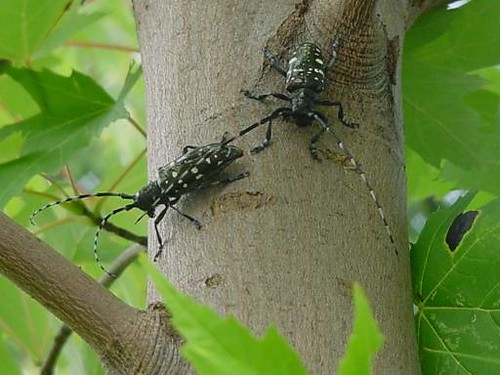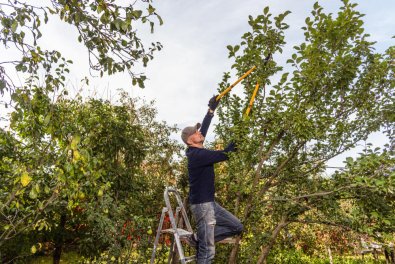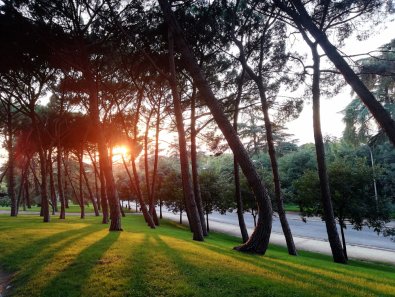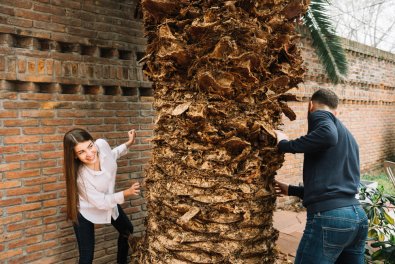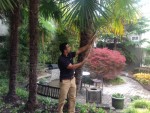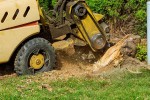Insects in Trees
There is a countless number of insects in the world and a lot of them love to feed off of or shelter in trees. Warm environments will see insects prosper year-round while cold areas will see insects resume activities during the spring and summer. Therefore, spring is a good time to head out to the yard and see which insects are hanging around on your property. Sesmas Tree Service has some tips for spotting and dealing with some common pests. Continue reading to learn what pests to look out for and the steps you can take to tackle them. Feel free to call Sesmas Tree Service if you have any specific questions or concerns.
Scale Insects
The Euonymus Scale, Cottony Cushion Scale, and Pine Needle Scale are some examples of scale insects that are known to form hard, colorful bumps on plants. They feed on plant juices and leave behind sticky honeydew, attracting other pests such as ants, flies, wasps, and bees. This honeydew is harmful because it coats the tree or plant, leaving it water-stressed and suffocated.
You will have to be proactive when dealing with scales insects. The waxy honeydew will prevent insecticides from taking effect. You will have to keep an eye out and apply systemic insecticide in the early stages of infestation. Citrus, palms, and fruit trees are especially susceptible to scale insects.
Eastern Tent Caterpillar
Though these silk spinners usually do not do much harm to mature trees, their feeding can defoliate young trees and cause premature tree death. You can spot an eastern tent caterpillar infestation by looking out for silk nests in trunk forks and branch crotches. These pests further disrupt your property by spinning their cocoons.
You can slow down the infestation by physically removing webs using a stick of some sort. Then, knock caterpillars into soapy water if you would like to exterminate them.
Whitefly
Another pest that produces sticky honeydew is the whitefly. These tiny pests travel in large groups and hide beneath leaves, feeding on plant juices and leaving behind honeydew which attracts ants, bees, wasps, and black mold. If not treated early, the tree will begin to die off starting with yellowing and falling leaves.
Emerald Ash Borer
This notorious pest is responsible for having killed tens of millions of ash trees and continues to threaten the billions of ash trees throughout North America. It has a metallic green hue and is roughly half an inch long. Females lay eggs in bark crevices and it is the larvae that wreaks havoc on ash trees, wolfing the tissue beneath the tree bark that is responsible for moving water throughout the tree. You can spot an emerald ash borer infestation by looking for dying canopy. Act quick because trees usually die within two years of these symptoms showing. In fact, trees with more than 50% die back will have to be destroyed not treated.
Call the Professionals
If you have a pest infestation and are not sure what to do, then call the professionals at Sesmas Tree Service to hire an ISA-certified arborist. We are trained, equipped, and prepared to tackle these uninvited guests.


